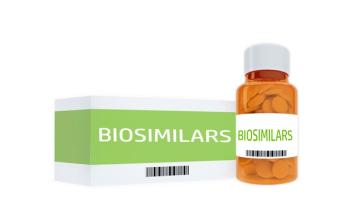
Pharmaceutical Distribution Trends to Watch in 2020
Success in the evolving pharmaceutical marketplace requires companies to continually reassess strategic direction, anticipate and absorb change, and move with deliberate confidence. As we stand on the cusp of a new decade, it’s time for leaders to prepare for both the frightening and exciting, to anticipate and overcome the inevitable surge of obstacles, and to seek altogether new opportunities.
We worked with Archbow Consulting’s distribution experts, Kevin Cast, Rob Besse, and Paul Furgal, to find out which pharmaceutical distribution trends we should be watching as we welcome 2020. Distribution is fundamental to being able to provide patients with life-changing and life-saving medications. Considering that a good distribution strategy can make or break a product’s success, preparing for the industry’s distribution headwinds and tailwinds is a no-brainer.
We hope these distribution trends-spanning everything from contracting to serialization to rethinking the supply chain-give you the added insight to make the most of your opportunities this year and over the coming decade.
Cell and gene therapies are driving the change from supply chain to demand chain
In a traditional supply chain, products are manufactured, the inventory is stored awaiting shipment, and then end users purchase the product. But in some Cell and Gene Therapy (CGT) supply chains, the process is initiated by patients when blood/tissue is collected, sent to a manufacturing facility where it is altered, and then returned to the patient upon completion. Because of this, CGT is often more of a “demand chain”1 than a supply chain. Where a traditional supply chain is linear, a CGT demand chain is frequently more circular-originating and ending with the patient. Moving from a traditional model to a new CGT model can impact every process, including ordering, delivery, invoicing, hospital contractual relationships, approved vendor process, and much more.
It’s time to rewrite the “generic playbook” for biosimilars
Adoption of biosimilars is slowly increasing as manufacturers continue to look for innovative ways to overcome historically lackluster performance. Traditional generic-style pricing discounts and strategies have not worked as well as hoped, reimbursement incentives tend not to favor biosimilars, and regulatory drivers are weaker for biosimilars than they are for generics. Biosimilar success in the EU is a good guide for real-world evidence and safety, but not necessarily for launch insights in the U.S. market.
Those manufacturers that have finally started finding traction are doing so by targeting novel supply chain tactics to facilitate adoption, including value-based contracting, contracting for segments of the IDN market, adopting IDN aggregator strategies, and embracing GPO contracting. As questions of biosimilar sustainability arise, it’s time to move past the traditional generic approach and embrace a new, novel direction.
DSCSA, serialization, and track-and-trace should be high on everyone’s priority list
As the pharmaceutical industry barrels towards November 27, 2023, more and more pharma companies are asking for help understanding the requirements to comply with the Drug Supply Chain Security Act (DSCSA). On that date, all trading partners within the pharmaceutical supply chain must be able to allow for:
- The interoperable exchange of transactional information (TI) and transactional statements (TS) in a secure, electronic manner
- The interoperable verification of the Product Identifier (PI), which includes the GTIN/NDC, serial number, lot number, and expiration date
- The interoperable tracing of TI and TS back to the manufacturer for each saleable unit
It is vital for all manufacturers to understand their responsibilities, especially those who will be launching new drugs during this critical time without any prior assistance with track-and-trace. Of note, November 27, 2020, presents the next major milestone. As of that date, FDA will enforce wholesalers to only accept and sell serialized products, wholesalers to verify the serialized number on all saleable returns, and dispensers to only accept serialized product.
Blockchain will become a reality in 2020, thanks to DSCSA
The serialization and track-and-trace requirements of the future will create an industry-wide need to tie all transactional data together in a way that cannot be manipulated, corrupted, or stored in one location. Enter blockchain.2 Blockchain allows for the storage of information in a way that is permanent and unalterable. Every new transaction is another “block” added to the “chain.” Blockchain accommodates decentralized data storage by connecting and duplicating information across a network that can be easily accessed but not manipulated.
Collectively, pharmaceutical companies, contract packagers, wholesalers, third-party logistics (3PL), service providers, and dispensers have collaborated to meet DSCSA objectives by investing billions in systems to increase efficiency, accuracy, and confidentiality while handling serialized product. Manufacturers need to be part of these developing solutions, keeping an eye to the future on how these evolving technologies have the potential to dramatically disrupt and advance the systems that have defined the healthcare industry.
Selecting the right third-party logistics (3PL) model will be more critical than ever
The debate over the best 3PL model (non-title vs. title) that picked up speed in 2019 will continue in 2020. In each model, the manufacturer utilizes a 3PL partner to hold physical inventory, manage order to cash, and process chargebacks. In a 3PL non-title model, the manufacturer retains title of the product until it is received by multiple distributors, specialty pharmacies, or wholesalers. However, in a 3PL title model, or sole distribution model, the 3PL sells the product to one distributor, specialty pharmacy, or wholesaler. Each model is unique and carries specific benefits based upon a variety of factors, including state licensing, potential manufacturer taxation savings, manufacturer cash follow benefits, product manufacturing issues, FDA mandated REMS programs, therapeutic category, patient population, and price of the product. There are many competent partners, with varying solutions, in the 3PL space. Who you choose as your partner and how you structure the contract will impact your commercial success for years to come.
IDNs aren’t quite the blackhole they used to be, thanks to aggregators
We’ve been talking about Integrated Delivery Networks (IDNs)3 for a while now, so we’re happy to see progress being made regarding pharma and biotech commercialization strategies at these key sites of care. IDN aggregators, also known as Integrated Care Networks (ICNs), have the ability to leverage a single contract with a manufacturer to cover multiple IDN members. This allows for consolidated data aggregation and reporting, access for Limited Distribution Drugs, and the analysis of real-world evidence by harvesting EMR data combined with dispensing data. As these entities secure additional payer contracts and limit the “first fill” or “courtesy fill” scenario, they will become an essential partner for pharma.
A timely Distribution Service Agreement (DSA) review can maximize buying power
When a pharmaceutical manufacturer signs on the dotted line to initiate or continue a relationship with their distribution trading partner, they are typically not looking 3-4 years into the future to see how the relationship may evolve. The team members who worked on the DSA may have come and gone, and the priorities that were so critical at launch may have changed. A thorough examination of the distribution relationship, before an extension is signed, can be a gamechanger. If your buying power has changed since the last time you signed a DSA, your leverage may have changed as well. DSAs with parent companies that include wholesalers, specialty distributors, specialty pharmacies, HUBs, and 3PLs can be integrated to your advantage with the right approach. Often, in those cases, an impartial third party is the much needed “secret weapon” to provide the industry perspective and analysis to guide negotiations. Just don’t forget to leave yourself, and your consultant, plenty of time-a rapidly approaching agreement expiration date is your worst enemy.
For a successful launch, choose your state licensure partner carefully
The first question we ask every new commercialization client is, “have you started your state licensure process?” All manufacturers must obtain and maintain state distribution licensure. This can be a complex, arduous, and time-consuming task because each state has its own individual distribution licensure process. Regardless, it’s absolutely essential to do it right, allowing enough time to prepare for launch while building an infrastructure to manage the ongoing renewal process. That’s where a good state licensure partner can make all the difference.
The many organizations that provide state licensure support vary in quality, experience, technology, and price. Finding the right partner for your unique needs is key to building a solid foundation for a successful launch. Industry consultants can connect you with the best partner for your particular situation.
The impact of 340B is only growing
If 340B is keeping you up at night, you’re not alone. Just about everyone we talk to is worried about how to manage the impact of 340B on gross-to-net calculations and its negative effect on overall profitability. Unfortunately, there’s still no silver bullet solution. But that doesn’t mean it’s time to give up hope. There are various proactive 340B strategies worth considering, each with its own list of pros and cons. It’s worth exploring the solutions available today and seizing on whatever net benefit is available.
Innovative supply chain strategies will require updated Fair Market Value assessments
As we look across the 2020 distribution trends, the only constant is change. New channels, a shift in mindset from supply chain to demand chain, and evolving sites of care all mean that the value of tomorrow’s services may not be the same as what is reflected in historical FMV assessments. As DSAs and contracts are negotiated and renegotiated, be sure you’re not only protected with updated FMV fee ranges but that you’re also in a position to secure the best rates available based on the latest market data. With mounting financial and reimbursement pressures, 2020 is not the time to leave money on the table.
References
Katie Rapp, vice president, Archbow Consulting
Newsletter
Lead with insight with the Pharmaceutical Executive newsletter, featuring strategic analysis, leadership trends, and market intelligence for biopharma decision-makers.




